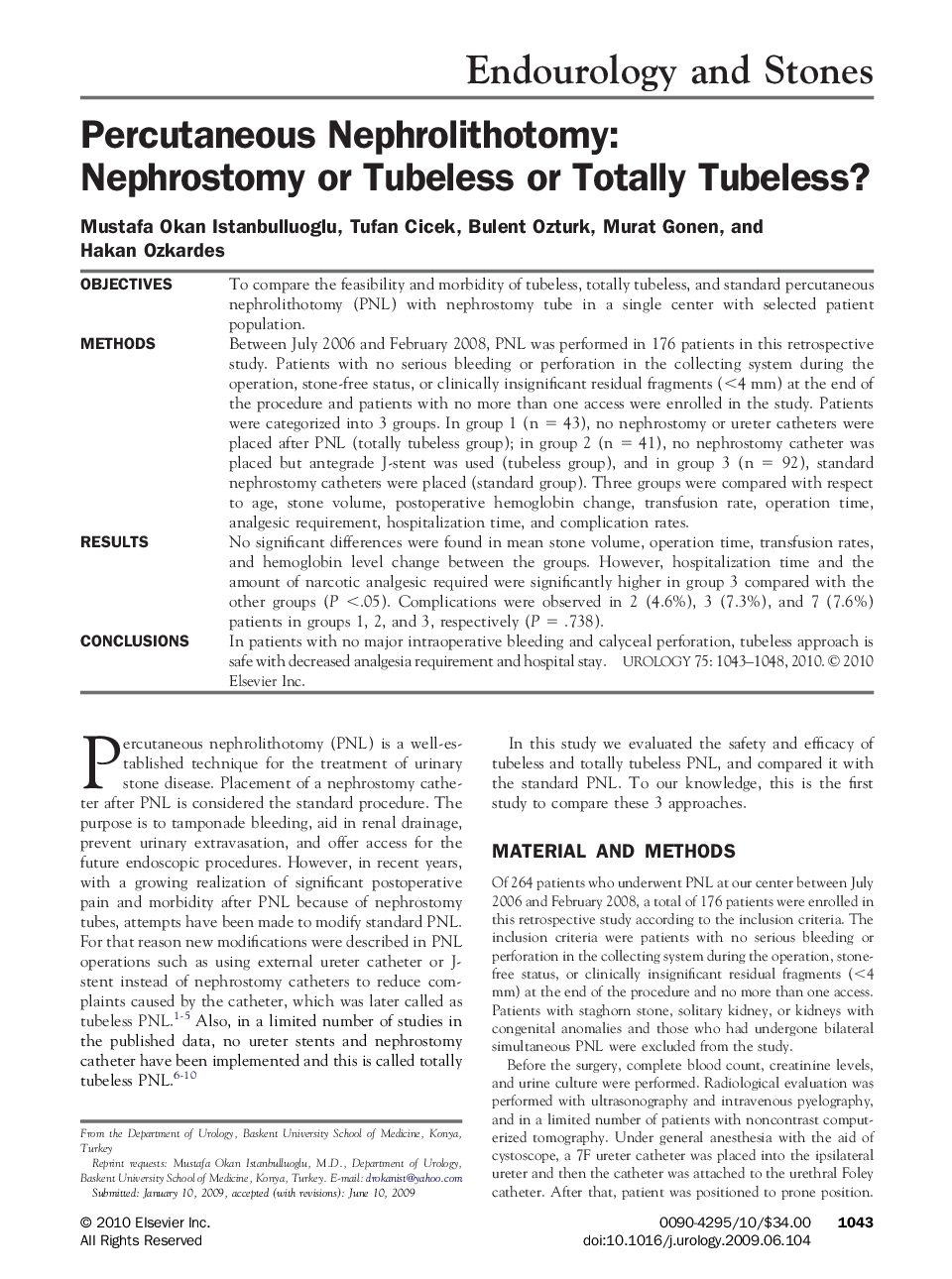| Article ID | Journal | Published Year | Pages | File Type |
|---|---|---|---|---|
| 3901567 | Urology | 2010 | 4 Pages |
ObjectivesTo compare the feasibility and morbidity of tubeless, totally tubeless, and standard percutaneous nephrolithotomy (PNL) with nephrostomy tube in a single center with selected patient population.MethodsBetween July 2006 and February 2008, PNL was performed in 176 patients in this retrospective study. Patients with no serious bleeding or perforation in the collecting system during the operation, stone-free status, or clinically insignificant residual fragments (<4 mm) at the end of the procedure and patients with no more than one access were enrolled in the study. Patients were categorized into 3 groups. In group 1 (n = 43), no nephrostomy or ureter catheters were placed after PNL (totally tubeless group); in group 2 (n = 41), no nephrostomy catheter was placed but antegrade J-stent was used (tubeless group), and in group 3 (n = 92), standard nephrostomy catheters were placed (standard group). Three groups were compared with respect to age, stone volume, postoperative hemoglobin change, transfusion rate, operation time, analgesic requirement, hospitalization time, and complication rates.ResultsNo significant differences were found in mean stone volume, operation time, transfusion rates, and hemoglobin level change between the groups. However, hospitalization time and the amount of narcotic analgesic required were significantly higher in group 3 compared with the other groups (P <.05). Complications were observed in 2 (4.6%), 3 (7.3%), and 7 (7.6%) patients in groups 1, 2, and 3, respectively (P = .738).ConclusionsIn patients with no major intraoperative bleeding and calyceal perforation, tubeless approach is safe with decreased analgesia requirement and hospital stay.
